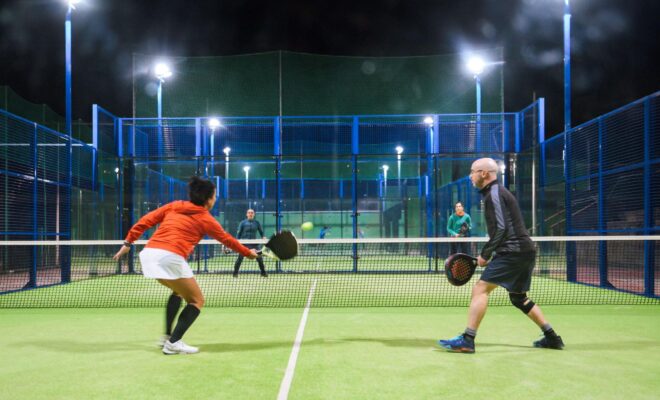Padel Tennis: the sport taking the world by storm

If you haven’t heard of padel tennis yet, chances are you soon will. Once considered a niche pastime in Spain and Latin America, padel has exploded in popularity across Europe and is now rapidly spreading worldwide. With its mix of tennis, squash, and a dash of social fun, it’s no wonder the sport has been called the fastest-growing racket sport in the world
The sport was invented in Mexico in 1969 by Enrique Corcuera, who adapted his home’s squash-like court into something new. It quickly spread to Spain and Argentina, where it took root and became a cultural phenomenon. Today, Spain is considered the global hub of padel, with more courts than anywhere else
In recent years, padel has surged in countries like Italy, Sweden, France, and the UK, and it’s now making waves in the Middle East and the US. Professional tours such as the Premier Padel and World Padel Tour are drawing big crowds and sponsorship deals, cementing the sport’s global future
What is Padel Tennis?
Padel is a doubles racket sport played on an enclosed court about a third the size of a traditional tennis court. Unlike tennis, the walls are part of the game – just like squash – meaning rallies are often longer and more dynamic
Some quick facts:
- Scoring: Uses the same point system as tennis (15, 30, 40, game)
- Equipment: Players use solid, stringless rackets with holes drilled in the face, and a slightly depressurised tennis ball
- Court: Surrounded by glass and metal mesh walls that create fast-paced, strategic rallies
- Team sport: It’s almost always played in doubles, making it highly social

Why is Padel so popular?
Padel is accessible to beginners yet still challenging for seasoned athletes. A few reasons behind its rapid rise:
- It’s easy to pick up. You don’t need elite tennis skills to get into it
- It’s lifestyle-friendly. Many clubs today pair quality courts with good social spaces: lounges, cafés or bars, chill zones after play
- It’s inclusive. Age, fitness, and previous racket sports experience matter less than with some other sports; many people play for fun rather than competition
- It’s fun and addictive. Once you’re on court, the rallies from the walls, teamwork, and trick shots all give it a lively energy
The Rise of Padel clubs
Another reason for padel’s success is its community-driven model. Padel clubs are sprouting up everywhere, offering a mix of fitness, social hangouts, and even business networking. Unlike traditional tennis clubs, where competitiveness can be intense, padel courts often foster a more relaxed, inclusive vibe
Tips if you’re thinking of trying it
- Most clubs allow pay-and-play, especially for new players, so you don’t necessarily need membership. The UK directory states that clubs list whether they offer non-member access
- Booking ahead helps: popular time slots (evenings/weekends) fill up
- Many clubs offer introductory sessions – suitable for newbies to get comfortable without pressure
- After your game, treat it as social: stick around for a drink, chat, network. That’s part of the lifestyle
- Don’t worry too much about being perfect: the sport is definitely beginner-friendly; lots of players are there to have fun rather than compete
Where can I play?
You can find a UK directory of padel venues here:
• The Padel Directory — “Find a Padel Court” across the UK
• LTA Padel – via their “Find a Padel Court” map/listing
• iPadel Ltd – UK Padel Courts directory
Is Padel the future of racket sports?
With participation numbers doubling in many countries year after year, padel looks set to stay. Many good judges believe it could rival tennis in global popularity in the coming decades. Its mix of fast action, accessibility, and social appeal makes it uniquely positioned to attract both casual players and professional athletes
Leave a reply
You must be logged in to post a comment.







